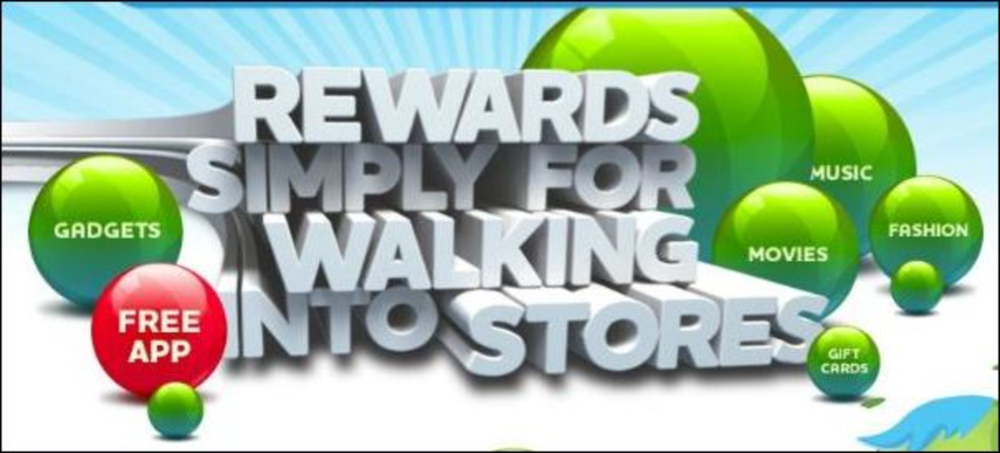Location-based mobile app Shopkick launched August 17 with retail partners Best Buy, Macy’s American Eagle Outfitters, Sports Authority and Simon Malls. The rewards app appeals to marketers because it performs one simple function: verifying the customer is in the building. Therefore, Shopkick can drive foot traffic to stores by offering rewards, according to industry experts.
“Mobile devices have become a central communication tool for a majority of individuals,” said Holly Thomas, VP of national media relations at Macy’s. “Connecting with our customers through these devices [and] using a tool like Shopkick is increasingly important. By providing incentives, information, special offers and rewards, we are creating a lasting connection with the customer via a personal device that they have close to them at all times.”
Shopkick automatically “checks- in” the shopper and instantly rewards him or her with points, or “kickbucks” when the app picks up an inaudible noise beamed throughout participating stores. Similar services, such as Foursquare and Gowalla, use GPS signals that can only determine that users are in the vicinity of a business.
Consumers visiting Macy’s, for example, will see a bubble appear on their iPhone saying, “Welcome! 40 kickbucks.” Afterward, a list of in-store offers appear. Customers can accrue additional points by scanning the barcodes on select products using their phone’s camera.
Shoppers can redeem kickbucks for gift cards, Facebook game credits, music downloads, charitable donations and other offerings. They can also accumulate points, which they can spend at any of the partner chains. For example, a shopper may earn his or her points at Macy’s but redeem them for a gift card at Best Buy. (Five hundred kickbucks earns a $2 gift card.)
Shopkick enables consumers to get discounts on merchandise at Best Buy, Macy’s, American Eagle, Sports Authority and malls in New York, Los Angeles, San Francisco and Chicago. Cyriac Roeding, CEO of Shopkick, said he expects to add more marketers and rewards providers to the company’s partner roster.
“This allows [retailers] for the first time to actually provide meaningful rewards to people who visit,” Roeding said. “Why is that interesting? Because the No. 1 problem for every retailer is foot traffic. The conversion rates are so good for physical retailers. Once you have [customers] inside, you have a really good chance of converting into a sale.”
Added Michael Dupuis, VP of Marketing at American Eagle, in a statement: “We believe Shopkick’s location-based retail app is a potential game changer in retail. It is designed to make the shopping experience more rewarding and fun for consumers, which in turn brings more shoppers to our stores.”
The free app is now available for the iPhone, with plans to expand to Android devices this fall.
Julie Ask, VP and principal analyst at Forrester Research, said Shopkick has plenty of potential as a marketing tool. For it to succeed, Shopkick must develop a large network of retailers and restaurants, and have its partners effectively promote the app and offer worthwhile discounts and promotions, she said.
“There’s the differentiation between what’s valuable to marketers and what’s valuable to twentysomethings competing for points and competing to be mayor of something,” Ask said.
“But there’s also a cost associated with installing these beacons in all of my stores,” she said. “And there is the cost associated with driving awareness of yet another application. But is it more valuable as a marketer to have somebody in my store than 100 meters down the street? Yes.”
There is stiff competition among location-based services – Foursquare, Gowalla, Loopt, Brightkite and Scvngr, to name a few. On August 18, Facebook unveiled its own location-based feature called “Places.”
However, unlike Foursquare and Gowalla, Shopkick doesn’t allow consumers to share their whereabouts with friends. However, that is in Shopkick’s future plans, Roeding said.
In July, Forrester released a report stating that just 4% of US online adults are using such services. It recommended that most marketers wait until “adoption rates increase and established players emerge from the fray.”
“I don’t think we’re going to see some scenario where I open up four or five different applications to log in every time I move from Starbucks, to work or to the gym,” Ask said. “That’s just not that feasible.”
Roeding demonstrated to media in early August that the application could potentially track a user’s movement from department to department within a single store, which could potentially trigger more targeted offers. That feature, however, is not being utilized by any of Shopkick’s launch partners, and no concrete plans are in place to introduce it anywhere.
Shopkick users shouldn’t be concerned about their privacy being violated, Roeding said. They can share as much or as little information as they’d like, and the application must be open to receive the high-pitch signal, he said.
However, if customers enter their Best Buy Rewards Zone card number, for instance, Best Buy can use their purchasing history to target offers to them through Shopkick. l








